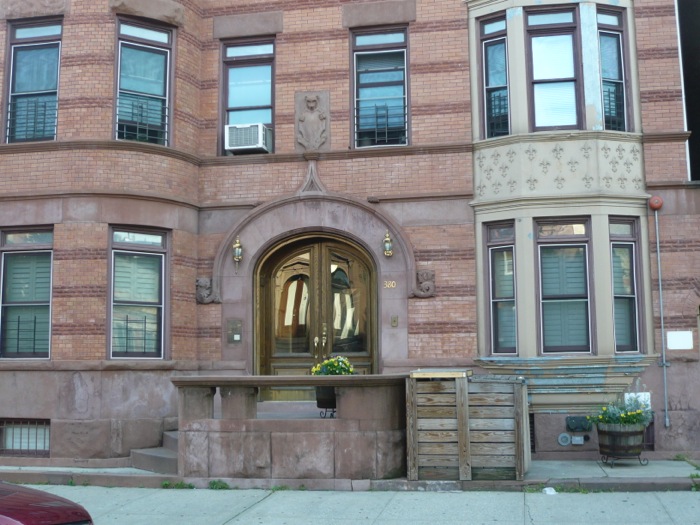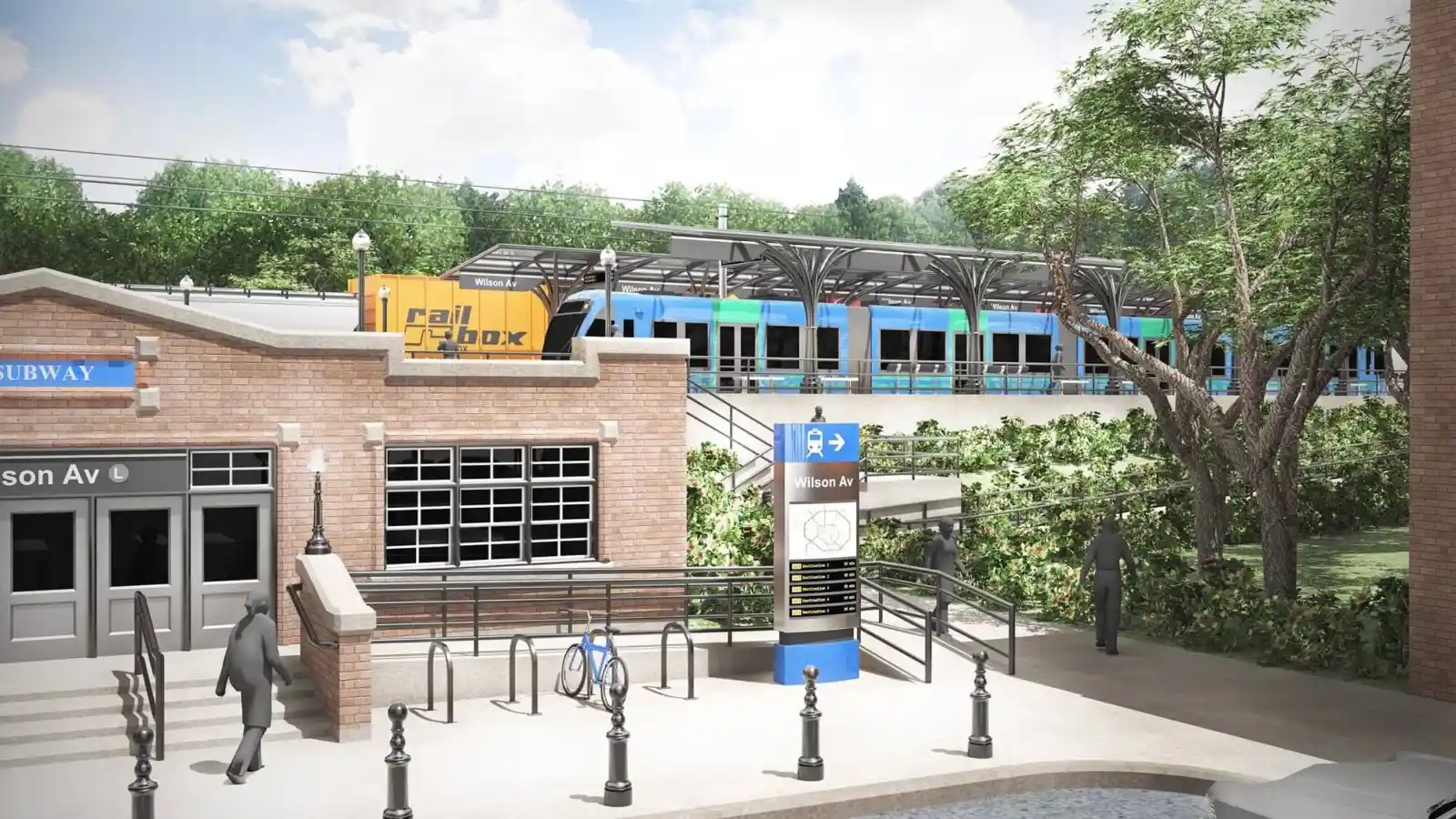More Angst Over Prices in Bed Stuy
A long piece in City Journal about gentrification in Bed Stuy travels some well-worn ground that will be familiar to readers of this blog and long-time residents of Bed Stuy but perhaps news to outsiders. In a nutshell, the point of the piece is that Bed Stuy gentrified before whites arrived, and now houses cost…


A long piece in City Journal about gentrification in Bed Stuy travels some well-worn ground that will be familiar to readers of this blog and long-time residents of Bed Stuy but perhaps news to outsiders. In a nutshell, the point of the piece is that Bed Stuy gentrified before whites arrived, and now houses cost $1,500,000 but shootings are still common. The story ends by wondering if gentrification will reverse itself and cites the case of a recent African American arrival who decamped to Kensington with his family.
“We were paying the rent of an upper-echelon neighborhood but had none of the security,” said the high school teacher.
One interesting fact the story uncovered: The much-touted 663 percent increase in the white population between 2000 and 2010 was actually due mostly to Hasids on the fringes of South Williamsburg, not hipsters or yuppies.
The story also quotes Bloomberg in the aftermath of a shooting that paralyzed an 11-year-old girl: “You have a right to live in Bed-Stuy and not have bullets whiz past your head.” That’s a nice sound bite, but we noticed that when a shooting occurred near Carroll Park, the police set up shop there; when the same thing happened in front of Saratoga Park, the police said there was no need for any extra police presence.
Meanwhile, the Real Deal looked into the details of who’s buying in Bed Stuy and found that 73 percent of sales of houses under $550,000 went to investors. “It’s tough out there for a Brooklyn buyer looking to land a modestly priced townhouse,” said the story. “But in the gentrifying area of Bedford-Stuyvesant, private buyers face even stiffer competition than elsewhere in the market for homes and small multi-family properties.” Flippers have been buying wrecks in all-cash deals for a long time, of course, but now the market is more competitive because the potential returns are higher than during the bust. An interesting tidbit: The story said that sometimes the price on the books isn’t the real price because buyers sometimes pay additional cash under the table to avoid tax.
Where do you see prices — and gentrification — in Bed Stuy heading next?
Bed-Stuy’s (Unfinished) Revival [City Journal]
Investors Are Behind 73 Percent of Bed-Stuy’s Cheaper Home Sales [TRD]
All Cash Investors Beating Buyers of Townhouses in Brooklyn [Brownstoner]





I think the biggest problem with new and long term resident is cultural. Many new (mostly renters) are not involved with the community and seem to have a problem with there their tongues. Say HELLO or even nod your head ever once in awhile especially if you have made eye contact with someone. I have notice many of the new homeowners are better and somewhat cordial to neighbors . I do not want Bedford Stuyvesant to become this cold place full of pretentious people like so many other name-brand neighborhoods around NYC.
Agreed, save for the occasional name calling.
Your statement reminds of the song “You’re so vain, you probably think this song is about you…” What hatred of “white” people? Why do “white” people have to be the focus of his attention? Do you feel left out in some way? If you read the article, it is an internal conversation between two members of the black community. Why does it have to involve you? Does the focus on strengthening black home ownership (and black owned businesses mean you hate white people – or does it mean you care about a black community? Are Hasidic Jews hateful of everyone else because they want to keep their communities strong? Those are two very different lenses. I don’t see where he says he hates white people at all. When you feel the needs of every person (white persons especially) must be included and addressed in EVERY conversation these community members have, or else you consider it hateful, just sounds like entitlement and selfishness to me.
It’s that simple for you, huh? It must be nice viewing the world through false equivilence where all things are equal and absolutely nothing is shaped by history and experience, except yours of course. His preference that it remain a diverse community that is primarily black is not racist, it is a preference. No where does he say it should remain black because black people are inherently better than white people (unlike the Klansperson you evoke). But, go ahead and equate a Klansman to a City Council member who would like to provide economic advantages to a historically disadvantaged community. That’ll get you far.
Essentially, let’s not act like the composition of Bed-Stuy was some historical accident. It was deliberate; the forces that caused it were real. Redlining was real and it had effects. “White flight” was real and it had its effects. And the community, the black community, responded in way that supported themselves. The desire to strengthen that community while others around them fled, discriminated and isolated them is quite understandable in that context.
I will do the same. Let’s start with what the question was he was answering. The question was “how do we stand as a community?” and “how do we strengthen ourselves?”. It is quite clear the question is how we stand as a black community – a conversation internal to the EXISTING black community. Not to outsiders. His response is we can accept diversity and still be be strong black community. In his analysis, “primarily” does not necessarily mean to the exclusion of “newcomers”. Again, your lens matters. Primarily can alternatively mean, less cynically, black-owned businesses that contribute to the strength of the EXISTING community and not being pushed out. And yes, it also means having a significant population of people.
Now, you ask why it has to be a black community? Because that is his preference, that’s why. That’s also the preference of the EXISTING community living there, which is why it is currently a majority black community. As folks were being redlined and isolated in these areas, they relied on each other and their community because they couldn’t do anything else. They were discriminated against by a number of power structures. That’s why. Now, you find it problematic, that those same people and descendants of those folks would like to maintain a semblence of the community that was there with them as others fled. You can say what does race have to do with it? I say a lot. Because race has a great deal to one with one’s experience and experience, support and need forms communities.
Now, again, what is problematic with him wanting to strengthen the economic position of the black community in Bed-Stuy? Many representatives across the city represent different ethnic, cultural and racial communities and do what they must to strengthen them.
MrHancock – I really have nothing to say to you. Your comments are vapid and empty.
Eh – I guess if you put the entire statement rather than selecting the one statement that you think goes to your point, your point wouldn’t be made. I’ll post the ENTIRE statement for others to view your statement in context of a fuller discussion. My question to you is – does advocating for an existing stong black community mean that he is excluding newcomers? Put a different way, just because he doesn’t care about newcomers, rather strengthening his existing community, the largest in black community in NYC, problematic for you?
And now, the full statement:
OTP: What about going forward, what do you see for the future of Bedford-Stuyvesant? We have growing Hasidic communities to the north and south, gentrification coming up the middle, there are foreclosures going on, you have high foreclosure rates, how do we stand as a community? How do we strengthen ourselves?
Vann: Well, we also are seeing an increase of young black professionals who bought homes in Bed-Stuy, increasing the percentage of ownership which is very, very important. Unlike what happened in Harlem. And of course, we had a large percentage of homeownership, but some that we lost because of the problem with the economics and mortgages, and also because people are getting older and retiring. Some of them have sold out and moved away, but I believe that our survival will be ensured by maintaining a significant percentage of homeownership by African-Americans.
More and more people are going into small businesses in our area, opening restaurants, boutiques, and we haven’t seen that in a long time. And they live in the community and run their businesses in the community. That’s how you begin to stabilize the community. It’s not all a bed of roses because all of the factors you mentioned are happening and if we’re not careful, we’re not strong, one day there will not be a Bed-Stuy that people will say is a black community. There is a risk but I believe that we will stabilize. Obviously, it is going to be more diverse than it ever was and I don’t think that can be reversed. We can accept that diverse community if it’s primarily black. But I think we all have to recognize that it’s not going to stay because we want it to stay. It’s going to stay because we realize it’s important to our people that it stays. Things like the Coalition for the Improvement of Bed-Stuy which we started. It’s a very important organization because it’s keeping all the developments corporations together in a way to get contracts to build or renovate in our community by these groups. There has to be consciousness about our ability to buy houses when they go up for sale. We can’t expect someone to sell it to us because we’re black. But if we can pay the same price others are paying that’s very important. So we have to have the economic institutions to make sure that we are protecting the culture, protecting the people because we are maintaining our presence in this community. It was a very conscious decision.
I’m sorry. I must of missed it. Where does he say he wants to “exclude newcomers”? You are wrong. That is not the stance he took. You are viewing through your own lens. Go back and actually read his words.